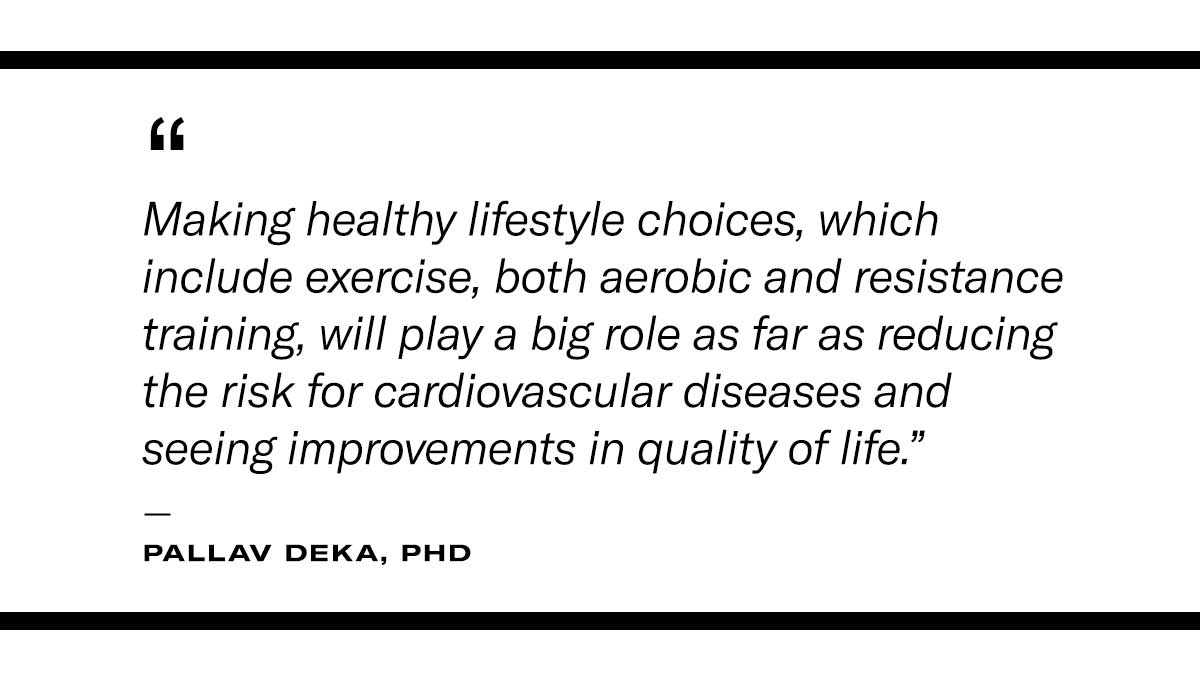A new study suggests you can reduce your risk of cardiovascular disease by adding strength training to your cardio routine.

- A new study shows a combination of aerobic and resistance exercise improved blood pressure, body fat percent, and waist circumference—all risk factors for cardiovascular disease.
- Resistance training can also boost aerobic performance, functional capacity, and quality of life.
- A combination of lifting and cardio reduces risk of cardiovascular disease more than cardio alone.

Strength training can improve sleep, mood, weight maintenance, and reduce visceral fat, but new research shows pairing strength training with your usual exercise routine is also a ticket to improving heart health.
In a study published in the Journal of the American Medical Directors Association, researchers found that a combination of aerobic exercise and resistance training improved cardiovascular health and risk of cardiovascular disease. Over the course of eight weeks, participants who performed a combination of high-intensity interval training on a treadmill with low- to moderate-intensity resistance training saw improvements in blood pressure, waist circumference, body fat percentage, body mass index, quality of life ratings, and aerobic performance over those without a resistance-training intervention.
Those positive changes can create a virtuous cycle, according to Pallav Deka, PhD, Assistant Professor of Health Promotion and Risk Reduction at Michigan State University and a lead researcher on the study.
“A lot of times, motivation comes from successfully completing a task and gaining confidence over time,” Deka said. “It is further enhanced when you see benefits from what you’re doing. The fact that participants in the experimental group saw a reduction in weight and waist circumference, along with improvement in their lean body mass, I think is a big motivation to continue exercising.”
Aerobic training improves heart strength and overall health, while resistance training decreases body fat and boosts strength, which ultimately lowers the burden of the body on the heart. That’s why it’s ideal to include both. “This approach to training allows for better outcomes for everyday adults dealing with and preventing cardiovascular disease and other health conditions,” said Mike Kantor, a certified exercise physiologist and health sciences researcher.

While there are clear benefits of aerobic training on cardiovascular health, both Deka and Kantor agreed that the key reason why this combination of training is more beneficial than just aerobic exercise alone is that strength training allows the heart to work less hard during everyday activities like walking, climbing a set of stairs, or cleaning.
“If you want more bang for your buck, adding resistance training with cardio is the better choice,” Kantor said.
Researchers in Deka’s study did not use a cardio-only group for comparison and examined a population already affected by heart disease. But larger studies published in Medicine and Science in Sport and Exercise support these findings in the general population. In a study with close to 40,000 women, participants who trained for strength saw a 17-percent decrease in heart disease risk than those who did aerobic exercise alone. And another study found even one strength session a week of less than an hour reduced the risk of a cardiovascular event by 40 to 70 percent.
If you’re aiming to improve heart health, lifting weights may be just as important as logging your cardio hours. Strength training can give you more energy for all of your activities. “Making healthy lifestyle choices, which include exercise, both aerobic and resistance training,” Deka notes, “will play a big role as far as reducing the risk for cardiovascular diseases and seeing improvements in quality of life.”